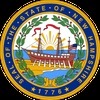
(View Complete Item Description)
The lessons in this unit were developed by teachers at Souhegan High School for junior/senior level Physics classes, to be taught during the first trimester of the 2016-17 school year. It includes 5-10 lessons that culminate in students demonstrating their ability to find meaning in complex text and incorporate key ideas of modern physics by completing the final creative writing project.
Modern physics is a very broad topic. We will be focusing on three of the main pillars of modern physics — special relativity, general relativity, and quantum theory. The goal of the unit it to have students use the concepts of modern physics accurately in a creative way and increase their willingness and confidence to learn more about the subjects beyond high school. Modern physics is intimidating to the general public. We hope to spark students interest and have students realize that they can make sense out of the counter intuitive model of reality.
Each topic will be broken into several phases of understanding:
Limitations of classical physics
Key principle that led to modern physics
Models for describing modern physics
Predictions and experiments that support and provide evidence for modern physics theories
The students will explore the phases by using inquiry-based reading. They will explore an anchor text for meaning while looking for where it addresses the four phases above. Students will then perform additional research and apply what they have learned in class to create their final project.
Material Type:
Lesson Plan,
Reading,
Unit of Study
Authors:
Charles Swift,
Lisa Petrie,
Nathan Carle



















